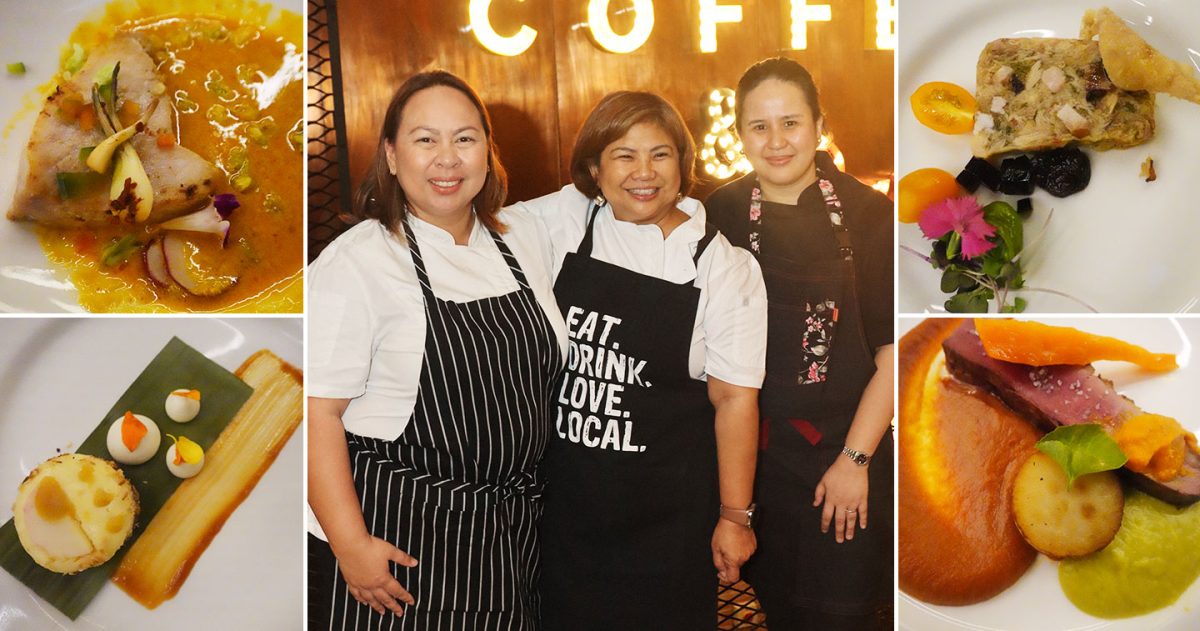MANILA, PHILIPPINES — A perfectly manicured and barely full plate is far from the usual look of quintessential Filipino cuisine. Yet, this was the set-up for the National Commission for the Culture and the Arts’ celebration of Filipino Food, Higara, held at the Sheraton Hotel on April 24. Higara, a term for Filipinos’ love for communal dining, featured six courses prepared by three Filipina chefs.

Kicking the dinner off was a Cordilleran dish, the Pinikpikan Rillete, which Chef Waya Araos-Wijangco described as traditionally macho, and cooked with brashness.
“I always say one of the ingredients of Cordilleran cuisine is testosterone so I wanted a more feminine touch,” said Chef Waya.

There was a vivid flavor to her interpretation of the dish which gelatinized the soup with the meat, forming into a moist loaf accentuated by tomatoes, greens, and edible flowers.
Chef Gel Salonga-Datu’s Kulawu Salad is representative of the vegetables Southern Tagalog provinces have to offer: Laguna’s seasonal leaves and roasted eggplant dressed in generous coconut dressing. While it can be compared to ensalada, what it does different is rely on each ingredient’s textures, crumbs, and crunch, even integrating the notorious alugbati into the salad.
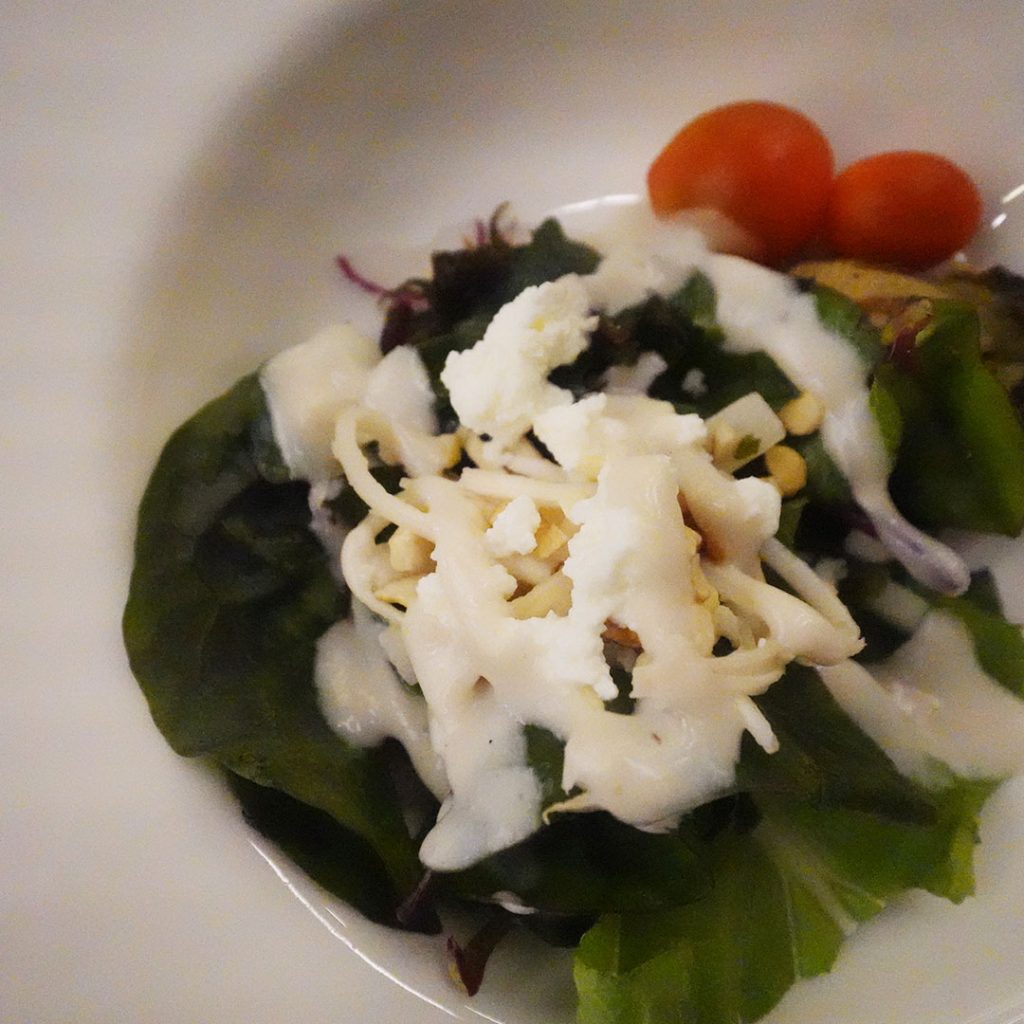
On the varied menu, the Banguingui-Sulu Marlin by Chef Waya best captures that balance of savory and sourness common in most Filipino dishes. Its tamarind-based broth packs a punch in every slurp and enhances the fish’s light flavor, while the use of sakurab gives a hint of bitterness that is just enough to provide another layer to the already addictive dish.
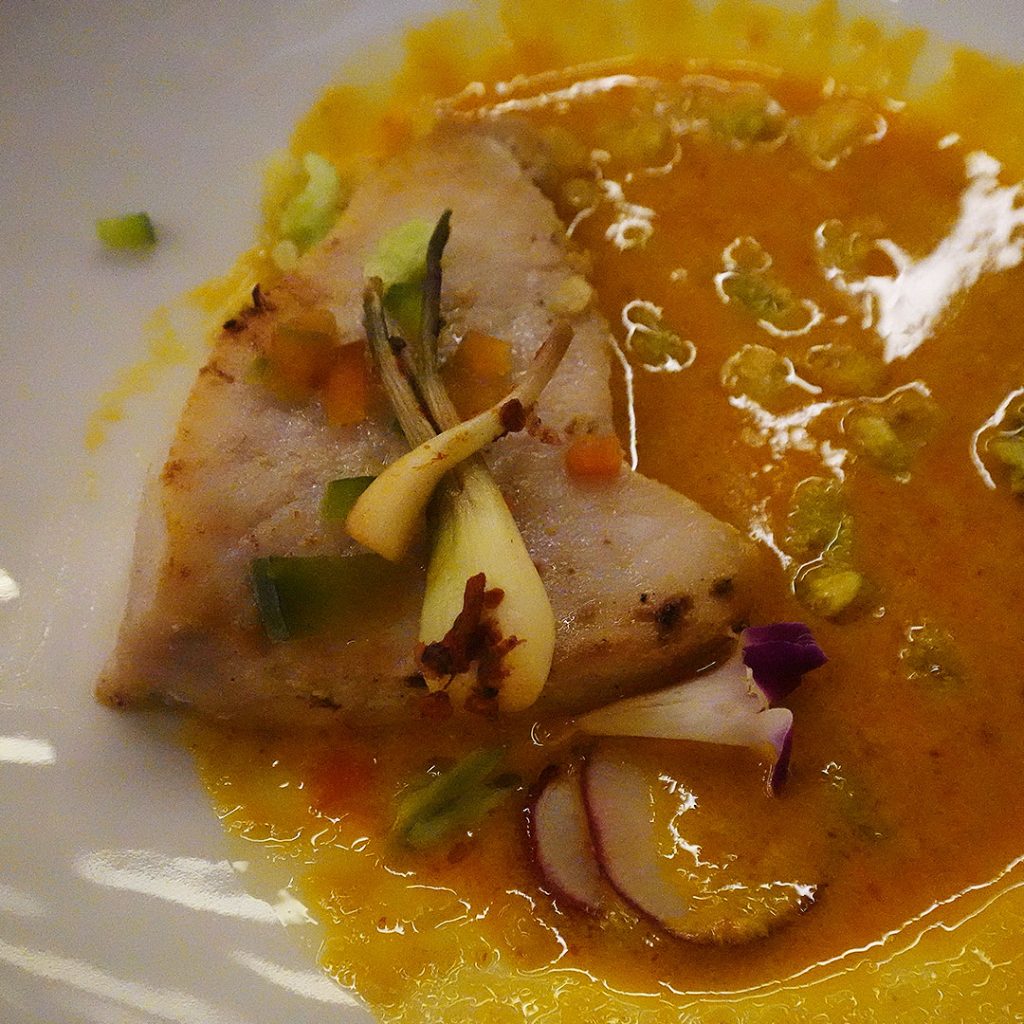
Kalderetang Pato by Chef Rhea Castro-Sycip takes on the form of seared duck breast with a generous serving of the kaldereta sauce which reduced the gamey taste of the meat. The traditional chicken or pork liver (in this case, both) which lends richness to any dish is integrated into the sauce and the carrot adds decorative flair to the plate.
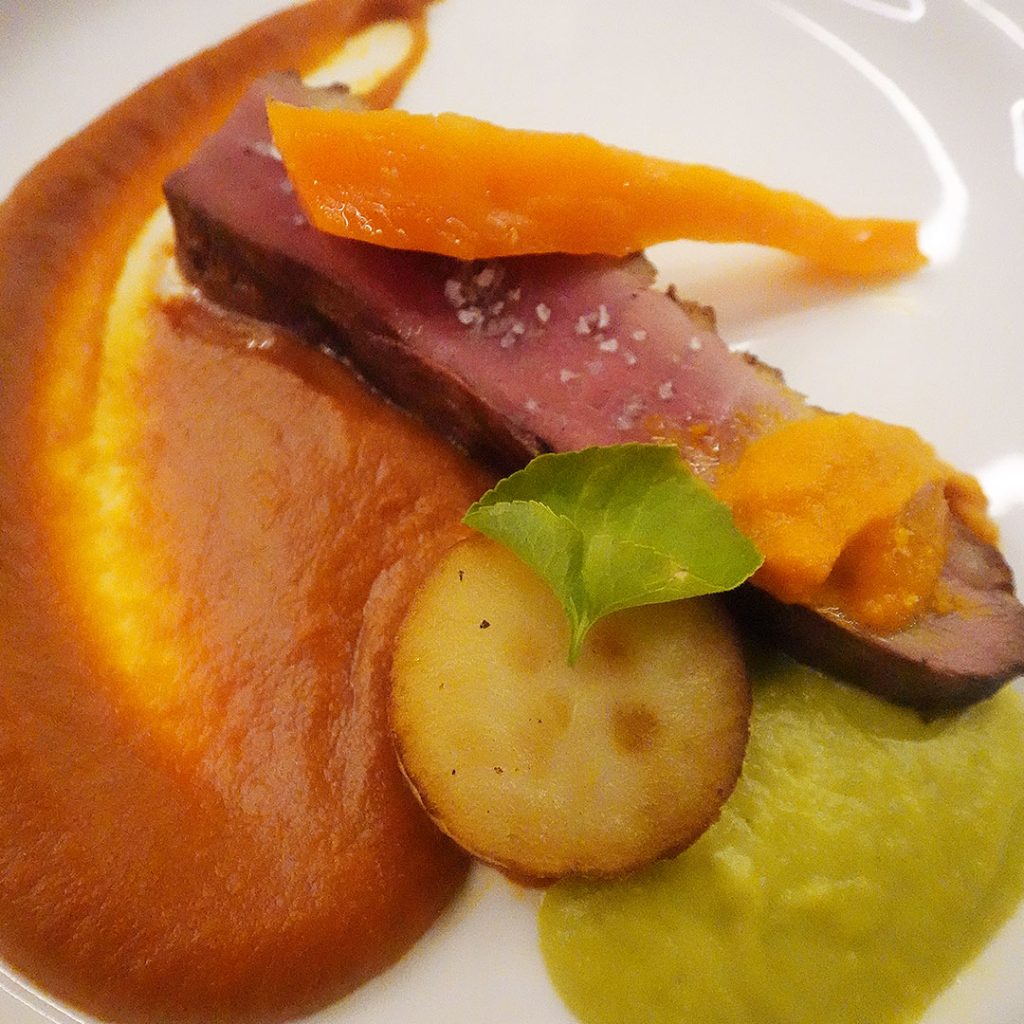
The first of the desserts, Bibingka Cheesecake by Chef Gel, has a mellow sweetness and creamy texture that is characteristic of a cheesecake, but relies on the topping of the salted egg as the decisive factor for being a bibingka. The shredded coconut does not compensate for the lack of the banana leaf and smokey flavors which seeps into traditional bibingka during its cooking process. Still, it does its job of cleansing the palate coming from strong savory courses that preceded it.

The most memorable dish of the night was served last: Chef Rhea’s Binaki. Her take on the sweet tamales, elevated by toast meringue and popcorn-infused mousse stands out in every bite. She shared how to build a bite: you scrape the meringue off the plate, scoop the binaki, and get a helping of the mousse.
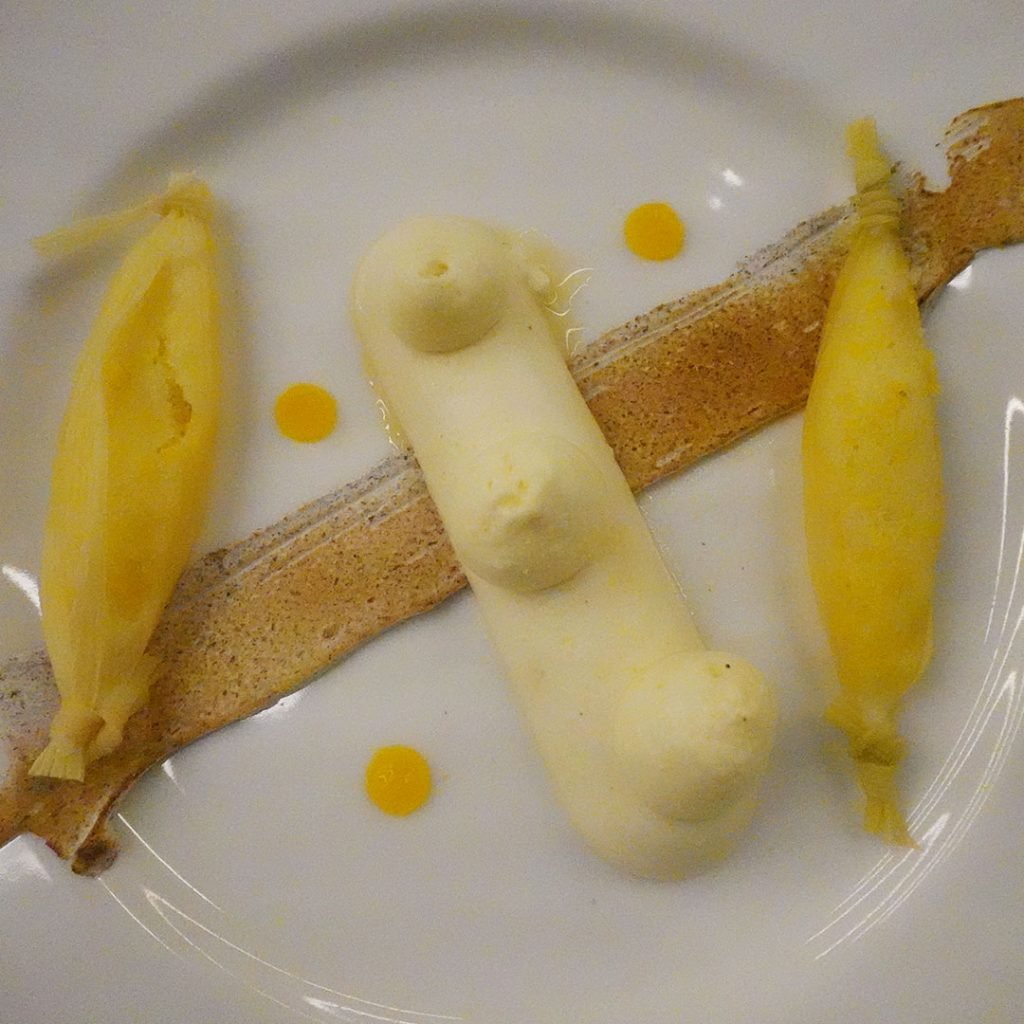
When it comes to representing the rich flavor profiles of the Filipino cuisine and the ingredients, Higara definitely achieved its objective. The dishes served were not exactly raging against tradition yet some felt forced, but it did not discount the strong culinary talents and extensive dishes Filipinos enjoy.
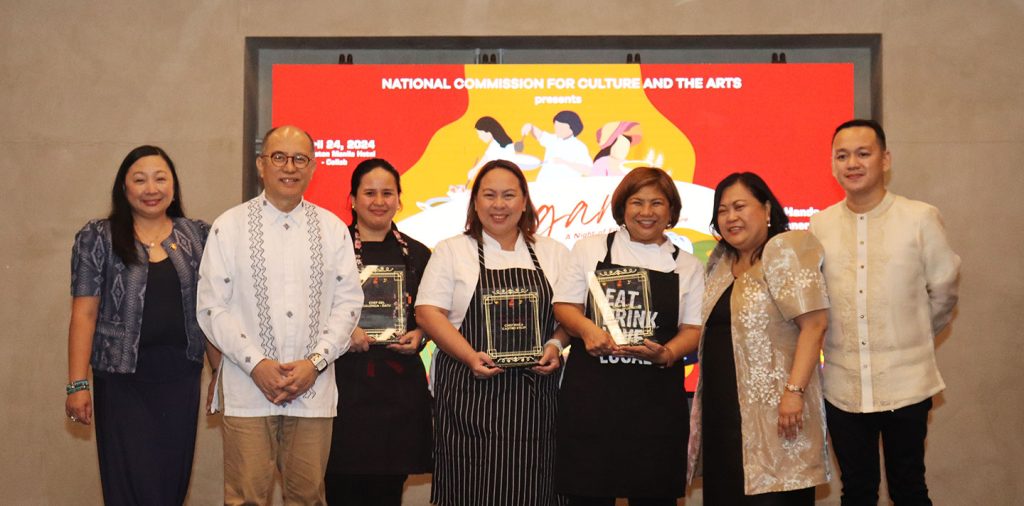
Under the steady hands of the three Filipina chefs, Higara showed that there are things to be discovered about Filipino food that go beyond the table during fiestas and gatherings and relies on what is ours as the main component of each dish. The diverse flavors on the plates were satisfactory in a way that makes you want to keep exploring and find the zest for what is not commonly served in the everyday household.

